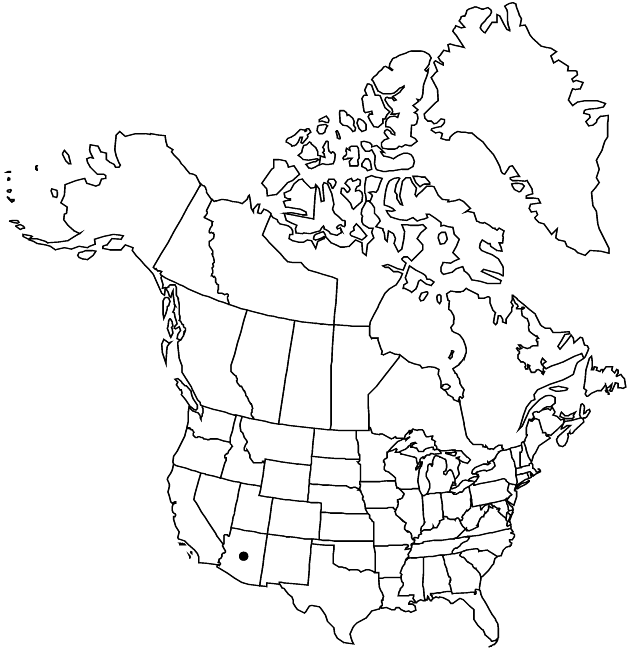Perityle saxicola
SouthW. Naturalist 4: 204. 1959.
Perennials or subshrubs, 20–40 cm; glabrate or puberulent. Leaves: petioles 10–30 mm; blades (2–)3-pinnate, 15–55 × 10–50 mm, lobes linear to flat-filiform, scarcely broadened distally. Heads borne singly or (2–4) in loose, corymbiform arrays, 7.5–10 × 10–14 mm. Peduncles 1–3 mm. Involucres broadly campanulate to hemispheric. Phyllaries 14–25, linear-lanceolate to lanceolate, 5–7 × 0.5–1 mm. Ray florets 10–17; corollas yellow, laminae oblong to oblong-ovate, 4–6 × 2–3.2 mm. Disc florets 75–200; corollas yellow, tubes 1–1.2 mm, throats narrowly tubular to narrowly funnelform, 2–2.5 mm, lobes ca. 0.7 mm. Cypselae narrowly oblanceolate to narrowly oblong-elliptic, 2.8–3.2 mm, margins notably calloused, sparsely short-hairy; pappi 0 or of 1(–2) bristles (2–)4–5 mm. 2n = 34.
Phenology: Flowering spring–fall.
Habitat: Crevices of igneous rocks
Elevation: 700–1100 m
Discussion
Of conservation concern.
Perityle saxicola occurs in the area of Tonto National Monument and Roosevelt Dam in central Arizona. The 2–3-pinnately dissected leaves with long-linear to flat-filiform lobes distinguish it from the similar P. gilensis with its broader leaf lobes.
Selected References
None.
